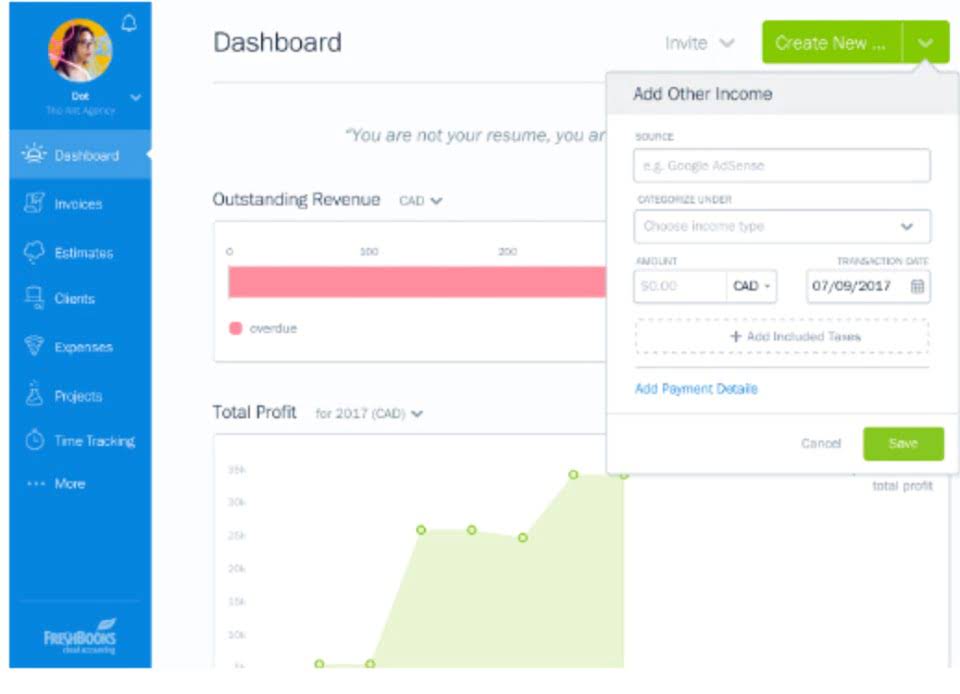
Although net income is considered the gold standard for profitability, some investors use other measures, such as earnings before interest and taxes (EBIT). EBIT is important because it reflects a company’s profitability without the cost of debt or taxes, which would normally be included in net income. Gross income will almost always be higher than net income since gross profit has not accounted for various costs (e.g., taxes) and accounting charges (e.g., depreciation).
- Gross profit and net profit, along with operating profit, are levels of profitability that a company generates.
- On the other hand, net income is useful when determining whether a company makes money when taking into account administrative costs, rent, insurance, and taxes.
- Unlike gross profit, the gross profit margin is a ratio, not an actual amount of money.
- When companies have returns, they must calculate net sales, which is revenue minus sales returns and allowances.
- The hours, multiplied by the hourly pay rate, equal the direct labour costs per boot.
Example of Gross Profit, COGS, and SG&A
The bottom line is a company’s income after all expenses have been deducted from revenues. For business owners, net income can provide insight into how profitable their company is and what business expenses to cut back on. For investors looking to invest in a company, net income helps determine the value of a company’s stock. Gross income is the total revenues of a company minus the cost of goods sold (COGS). Businesses often use gross income instead of net income to better gauge their product-specific performance.
The gross profit formula to lower costs and increase revenue
Gross profit, or gross income, equals a company’s revenues minus its cost of goods sold (COGS). It is typically used to evaluate how efficiently a company manages labor and supplies in production. Generally speaking, gross profit will consider variable costs, which fluctuate compared to production output. Some types of labor costs are included in cost of goods sold, while others are not. In short, gross profit measures how well a company generates profit from their labor and direct materials. Gross profit measures the amount of profit that a business generates after subtracting the costs of production or rendering services.
- Since they don’t change much over time, these expenses might be referred to as fixed costs.
- Both gross profit and net profit are essential in measuring the profitability of a business.
- We may earn a commission when you click on a link or make a purchase through the links on our site.
- Non-operating expenses are all the other expenses not part of COGS and operating expenses.
- An increase may indicate that recent changes are working and should be enhanced or continued.
What is the difference between profit margin and gross profit?
When you do get orders, material costs (what you pay for coffee beans or milk) and labor costs (what you pay baristas to make coffee)—add up. The same goes for other variable costs such as packaging and other ingredients you need to make your product. For example, if you see gross profit falling without any change in your item’s selling price, it tells you that your production costs have increased. If you offer multiple goods or services, you may discover they don’t all perform equally well. Even products that sell a large volume may not be very profitable if they demand a large amount of materials and labor costs.

Non-Manufacturing Overhead

For example, a company has revenue of $500 million and cost of goods sold of $400 million; therefore, their gross profit is $100 million. To get the gross margin, divide $100 million by $500 million, which results in 20%. Revenue is the total amount of money that a company brings in from its sales. Profit is the portion of that revenue that is left after expenses have been paid. Net profit is the final profit figure arrived at after all costs and expenses, both direct and indirect, have been accounted for.

- Before COGS is deducted from this amount, sales returns, discounts, and allowances are first subtracted from revenue to arrive at the net sales.
- Cost of goods sold (COGS) is subtracted from total receipts to determine gross profit.
- We’ll also discuss strategies for increasing your gross profit margin so you can boost your profits and expand your small business.
- One way to address that low NPM would be to reduce overhead costs and rent a smaller space.
- To understand the difference between gross profit and net profit, let us take a look at the income statement of Nike, Inc. for the period ending on May 31, 2022.
The GMR is also a useful metric for investors and analysts, as it can provide insight into a company’s potential for growth and profitability. A high GMR suggests that a company is generating more profit on each dollar of sales and may have more financial flexibility to invest in growth opportunities. A low GMR suggests that a company may be struggling to generate profits as the COGS is too high. Net income, on the other hand, represents the income or profit remaining after all expenses have been subtracted from revenue. It also includes other income sources, such as income from the sale of an asset. Both gross and net income are important but show a company’s profitability at different stages.

Ask Any Financial Question
It merely tells you which one generated more income according to how that company accounts for its expenses. For example, a company might increase its gross profit while borrowing too much. The additional interest expense for servicing more debt could reduce net income despite the company’s successful sales and production efforts. Both components of the formula (i.e., gross profit and net sales) are usually available from the trading and profit and loss account or income statement of the company. The net profit to gross profit ratio (NP to GP ratio) is an extension of the net profit ratio. If we deduct indirect expenses from the amount of gross profit, we arrive at net profit.
How to Find Gross Profit: Formula and Examples
Non-operating items are those that are not related to the primary operations of a company. The cost of goods sold is the direct cost of producing the goods sold by a company. Below we will discuss gross profit and net profit, explore their formulas, and highlight some key differences between the two. Adam Hayes, Ph.D., CFA, is a financial writer with 15+ years Wall Street experience as a derivatives trader.
The metric is expressed as a percentage of sales and may also be known as the gross margin ratio. Gross profit is typically used to calculate a company’s gross profit the gross profit does not take into account: margin, which shows your gross profit as a percentage of total sales. Unlike gross profit, the gross profit margin is a ratio, not an actual amount of money.
Would you prefer to work with a financial professional remotely or in-person?
A company can get discounts by purchasing in bulk the raw materials from the suppliers. This makes net income more inclusive than gross profit and can provide insight into the effectiveness of overall financial management. Gross profit also allows you to understand the costs needed to generate revenue. For example, let us consider Tesla’s gross profit reported in their consolidated statement of operations for the quarter ending on September 30, 2021.
